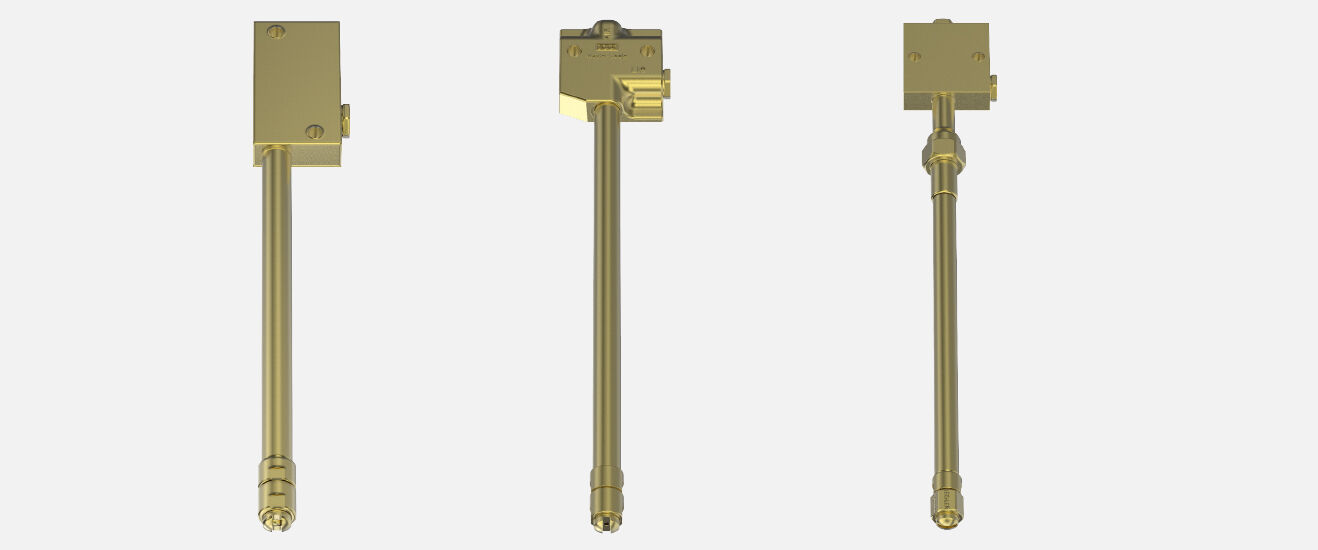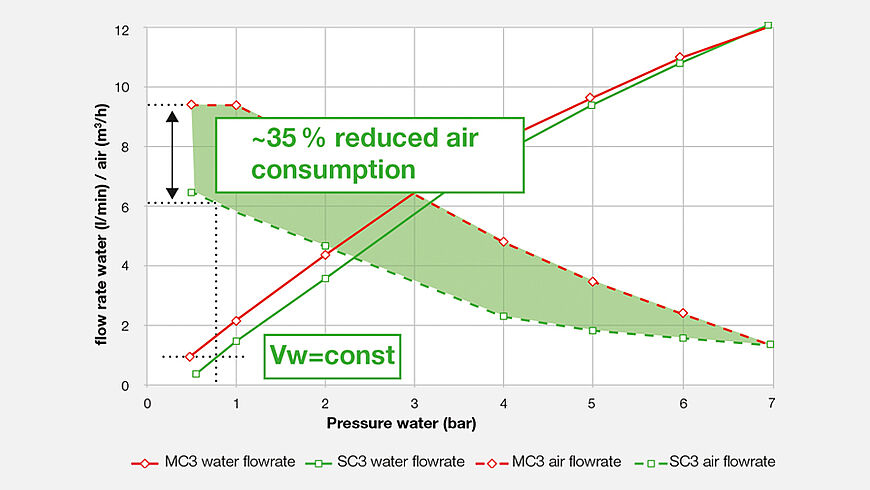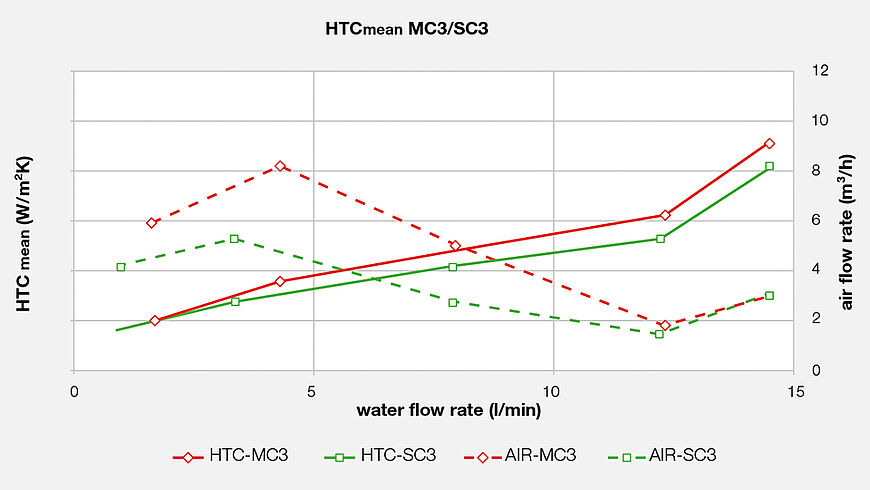Slabcooler ECO
The Energy Saver.
The Lechler Slabcooler ECO air mist nozzle takes the proven concept of the Lechler Slabcooler to the next level and meets the increasing demand for energy efficient secondary cooling in slab casting.

Less consumption of compressed air – less energy consumption – lower operating costs
Consumption of compressed air is the main cost driver in operating air mist secondary cooling systems in slab casting. With conventional air mist nozzles the consumption of compressed air and hence energy is very high – especially at low casting speeds when water flow rates are low. In order to reduce the compressed air consumption Lechler has developed the Slabcooler nozzle already for the first generation of thin slab casters whilst the conventional Lechler Mastercooler nozzles were mainly applied in thick slab casting.
With its enhanced flexibility of the cooling capacity the Slabcooler ECO provides equivalent spray performance in terms of spray characteristics from min. to max. water pressure whilst the consumption of compressed air has been reduced significantly compared with a Mastercooler nozzle of identical size.
 Mastercooler (MC 3) and Slabcooler ECO (SC 3) air consumption.
Mastercooler (MC 3) and Slabcooler ECO (SC 3) air consumption. Mastercooler (MC 3) and Slabcooler ECO (SC 3) HTC and air consumption.
Mastercooler (MC 3) and Slabcooler ECO (SC 3) HTC and air consumption.Slabcooler ECO – Your advantages at a glance
- Reduced Compressed Air Consuption (TCO)
- Reduced energy consumption
- Reduced operation costs
- Reduced CO2 emission
- "Green Steel” production
- Excellent cost/performance ratio
- ROI << 1 year
- ROI << 1 year
- Plug and spray
- No modification of segment piping required
- Conversion during regular segment maintenance
- Change back to status quo possible
- Well Proven Concept
- High operation safety
 Slabcooler ECO = savings to the fifth: The Lechler Slabcooler ECO is not only an energy saver due to much lower consumption of compressed air. It thereby saves significantly CO2 emissions and operation costs for provision of compressed air. It is also a time and risk saving revamp due to plug and spray (exchange of nozzles only) as no major segment piping modifications are required and, if desired, can be built back to existing status quo with no additional effort.
Slabcooler ECO = savings to the fifth: The Lechler Slabcooler ECO is not only an energy saver due to much lower consumption of compressed air. It thereby saves significantly CO2 emissions and operation costs for provision of compressed air. It is also a time and risk saving revamp due to plug and spray (exchange of nozzles only) as no major segment piping modifications are required and, if desired, can be built back to existing status quo with no additional effort.